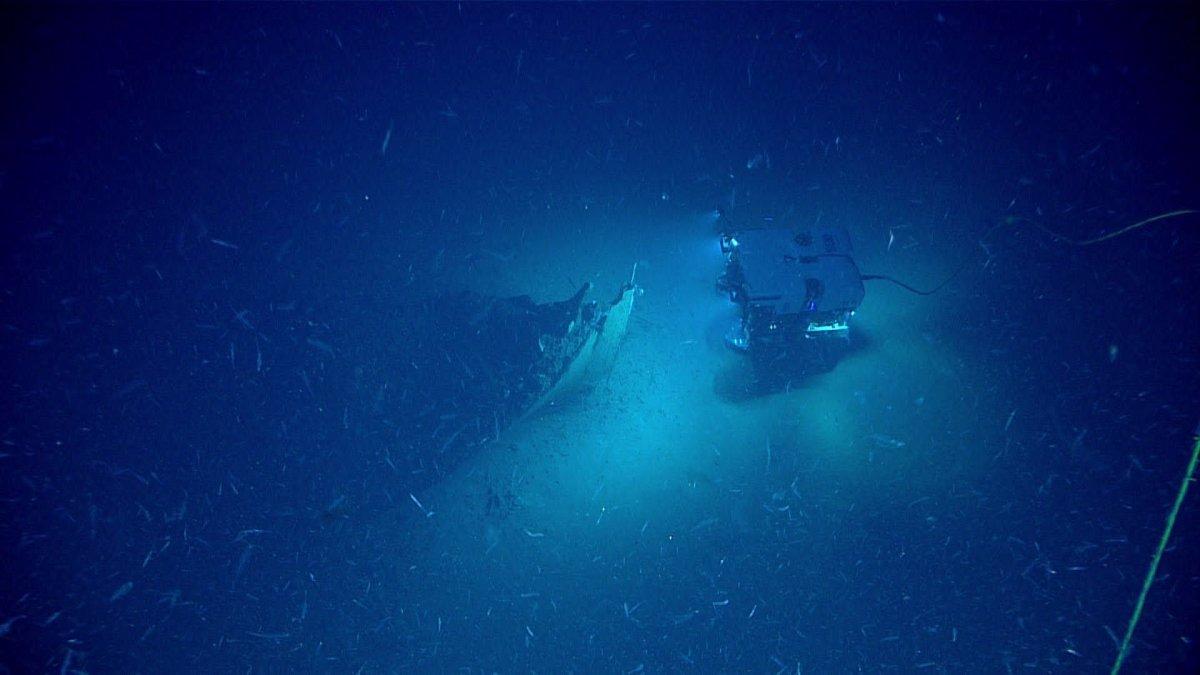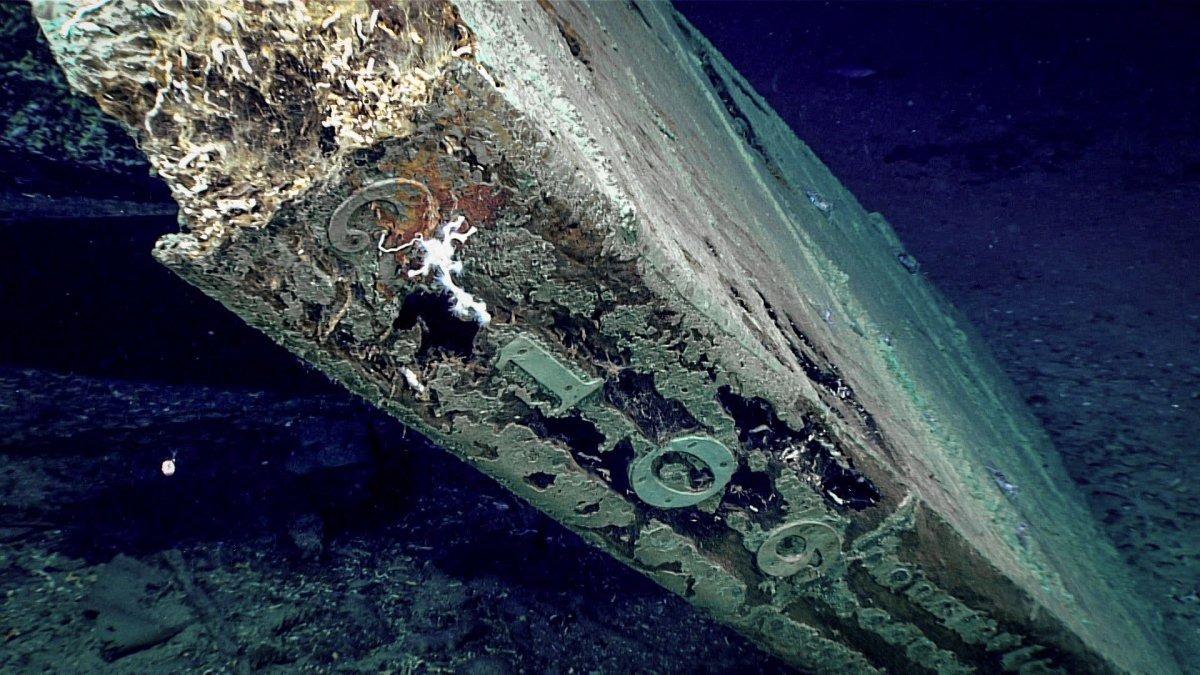Gulf of Mexico Wreck: 200 Years of Missing Clues
Researchers testing equipment in the Gulf of Mexico inadvertently discovered the remains of a 200-year-old ship earlier this month. Evidence from the wreck suggests its sailors may have met a fiery end.
The team aboard the National Oceanic and Atmospheric Administration’s (NOAA) Okeanos Explorer found the impressive wreck when they were testing a remotely operated vehicle about 160 miles off the coast, The Charlottesville Observer reported.
“[The find] was completely unexpected, like finding a needle in a haystack, but you’re not looking for it,” Frank Cantelas of NOAA’s Office of Ocean Exploration and Research told Newsweek via email. Although he wasn’t on the ship, he said he knew the team felt very lucky to be involved in such an “amazing” discovery.
The long-lost ship lies about 1,460 feet below the water’s surface, along a long underwater cliff known as the Florida Escarpment. The team made the discovery on May 16 during an expedition, before sharing news of the wreck online this week.

The ROV ‘Deep Discoverer’ approaches the bow of a shipwreck in the Gulf of Mexico, Thursday, May 16, 2019. NOAA Office of Ocean Exploration and Research
An unusual sonar signal alerted the team to the wreck, and they rushed to contact expert marine archaeologists once they realized what they had found. The archaeologists joined a live video feed from the seafloor to observe the dive remotely.
Your morning starts here
Start your day with a curated look at the world’s top stories and why they matter.
By clicking SIGN ME UP, you agree to Newsweek’s Terms of Use and Privacy Policy. You can unsubscribe at any time.
“Archaeologists who otherwise would not have been able to participate in the dive were able to share in the excitement from shore,” Cantelas said. “Some of them received calls to participate while driving home from work or meeting up with friends after work.”
The high-resolution images revealed a ship likely built in the mid-19th century, according to NOAA. But archaeologists could not immediately say how long ago the ship sank. Made of wood with copper sheathing, the vessel is believed to have been about 124 feet long.
To this day, many mysteries remain about the ship. “The remotely operated vehicle dive… provided basic information about the wreck and its current condition, but left archaeologists with many questions, including what kind of sailing vessel the wreck is, why it is there, where it is from, how old it is, who was there and where they were from,” Cantelas said.
Investigators have not been able to confirm details about the ship’s nationality, crew, platform or trade, NOAA said. However, the numbers “2109” were tacked to the edge of the ship’s rudder and some iron and copper artifacts were detected near the ship.
Specialists are combining multiple images of the wreck to create a mosaic image of the ship for further investigation. Cantelas said this will be “key” to understanding how artifacts and other features of the site are related.
“These relationships could reveal how different areas of the ship were used and how the wreck deteriorated after the sinking. It gives us a fairly accurate representation of the entire wreck at the time it was found, including its size and shape, which is much harder to discern from the limited viewpoint of video,” he said. “The photomosaic also provides a record of the site at the time it was discovered, so we can determine how it is changing as it slowly deteriorates.”

The numbers “2109” are visible along the trailing edge of the rudder of a shipwreck discovered in the Gulf of Mexico, Thursday, May 16, 2019. The pattern of nails holding the copper sheathing is clearly… NOAA Office of Ocean Exploration and Research
Much of the ship’s hull is relatively well preserved, although parts of the protective copper plating have deteriorated. Unusually, no structure remains above the ship’s waterline and the team found little evidence of firm rigging.
Charred pieces of wood and bent fasteners suggest the ship may have caught fire at sea. Researchers believe the fire may have engulfed the ship and destroyed almost everything on the water’s surface.
NOAA spokeswoman Emily Crum described the “surprising” find to the Observer . “Normally, when we find or explore shipwrecks, we have basic information that allows us to search for a target,” she told the paper. “In this case, there was no information to suggest the wreck was there. The team just ‘stumbled’ upon it.”
Cantelas said his NOAA office has no plans for further research on the wreck yet. “Because deep-sea exploration is difficult and expensive, we don’t know when there will be another expedition,” he said. But the data and images they have so far will be made public. He hopes this will encourage other groups to explore and investigate the site.
“The deep ocean waters are home to many shipwrecks and are an underwater museum that we have only just begun to explore. This chance discovery is a window into the past and allows us to learn more about the maritime archaeology of the Gulf of Mexico,” he added. “While it is one thing to study historical records, we can learn things from shipwrecks and from the study of artifacts that were never captured in the written record.”






